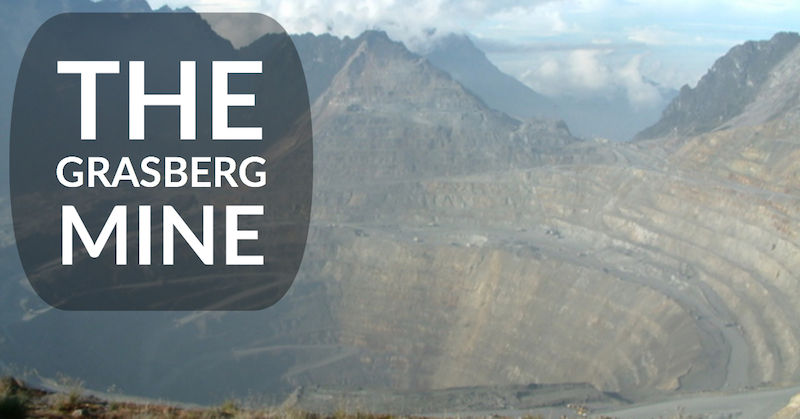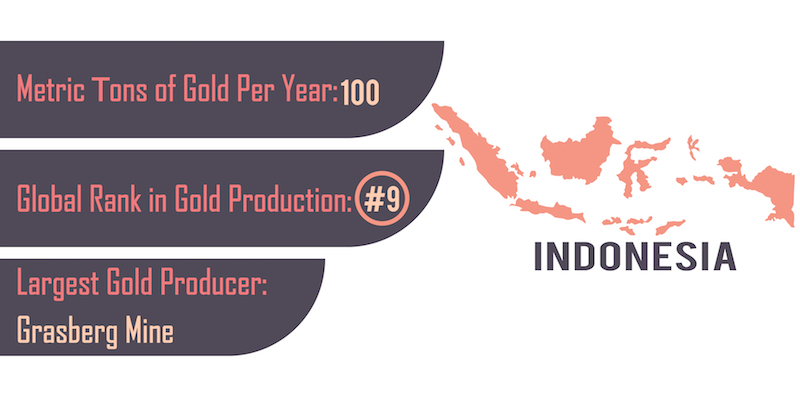
photo courtesy Alfindra Primaldhi by Creative Commons Attribution 2.0 Generic license.
Mining is one of the major contributors to most of the economic activities undertaken in various places across the globe. To this effect, a number of mines have been operating in different locations, with different capacities.
Even for someone familiar with modern mining, the size and scale of some operations can remain quite spectacular. The large mines operating around the world are truly a modern marvel. One of such mines is the Grasberg mine.
The World’s Largest Gold Mine
The Grasberg mine is the world’s largest gold mine. It is located in Papua Province of Indonesia. It sits at an altitude of 14,000 feet in the remote area of Sudirman Mountain Range. It also happens to be near Puncak Jaya, the highest mountain in Papua.
The mine is estimated to contain about $40 billion in gold ore reserves. Its number of employees range from 19, 500 to 20,000 people, performing a variety of duties related to the support of mineral extraction.

Mine Operators
Operations of the mine are undertaken by Freeport-McMoRan (FCX) which has the largest shareholding in the mine of about 90.64% PT Freeport Indonesia (PT-FI), which is the principal Operating Subsidiary in the whole of Indonesia. The other percentage is what the government owns as well as manages.
Freeport-McMoRan (FCX) executes its duties or operations through the contract agreements made with the government of Indonesia, where it is granted operations such as exploration, mining and production related activities in an area of 27,400 acres known as Block A. Other operations are undertaken in 413,000 acres area known as Block B.
Nevertheless, the major operations of Freeport’s gold mining activities which are proven with probable mineral reserves and current mining related are located on a large scale in Block A.
How the Gold Ore is Extracted
Grasberg mine is under three major and viable operations namely, the Open Pit, the Deep Ore Zone underground mine and the Big Gossan underground mine. But over time, the Open pit has been the chief source of the gold concentrate.
Recently, the mine has also been working on developing the fourth operation known as the Deep Mill Level Zone, which has not made much progress though, due to regulatory uncertainty. The mine has since been slowing down on increasing its investments in its underground projects.
However, In August last year 2017; Freeport-McMoRan (FCX) made a pronouncement that it was going to divest its ownership in PT Freeport Indonesia (PT-FI) so that Indonesia would own 51%. Then in return, the Contract of Work (CoW) would be replaced by a Special License (IUPK) which advocates for mining rights to 2041 and FCX would build a new smelter by 2022 in improving its operations.
The main source of power for all the operations in the mine is a coal-fired plant that was built in 1998. Other power sources include diesel generators. The other necessity such as water is obtained from the mountain streams as well as the water from the underground operations.
Read: The World’s Largest Gold Nugget Discoveries
Grasberg’s Immense “Footprint”
Grasberg Milling and Concentrating complex happens to be the largest in the whole world. It consists of four crushers and two huge semi-autogenous grinding (SAG) units in place which process the ore on a large scale daily.
When carrying out its operations of gold extraction from the ore, the mine has a systematic way of doing it, where the ore undergoes primary crushing. Thereafter, before delivery, it passes through a mill complex for further crushing and grinding until the floatation process is undertaken.
It is very interesting to see what happens when the floatation reagents are used to separate gold from the concentrate which also contains copper. During such operations, the slurry or semi-liquid mixture containing gold and copper concentrate is delivered through pipelines to the seaport of Amamapare where it is dewatered.
After the filtrating and drying of the concentrate containing gold and other minerals, it is then shipped to smelters around the world for the final extraction of the minerals.
Challenges at the Mine
However, despite being the largest gold mine in the world, Grasberg has also continued to record a number of challenges in its operations among them being the occurrence of unfortunate incidents and accidents. In one of the accidents which occurred in the year 2013, a training facility tunnel collapsed leaving at least 33 workers trapped underground. Still others lost lives as many others went missing.
The mine has also had a challenge of workers going on strikes as they demand for improved conditions of service in terms of payments.
In conclusion, gold mining as one of the major activities of Grasberg mine has immensely contributed to the well-being of the economy and livelihood of many people in Indonesia. While there are always difficulties and challenges associated with a mining operation of this size, the mine has brought an economic engine. And the inhabitants who are the main human resource for the mine, have also been the major beneficiaries of the main developmental projects the mine has been undertaking, providing good paying jobs in this remote area of the world.
Next: The Largest Chunk of Gold Ever Found on Earth
